Coffee is not a carcinogen and may actually reduce the risk of certain cancers, the International Agency for Research on Cancer, the cancer agency of the World Health Organization concluded. But drinking very hot beverages could raise the risk of oesophageal cancer, the agency cautioned.
This is a reversal from the agency’s previous classification of coffee as possibly carcinogenic, linking it to bladder cancer. But new studies since then suggest that the previously identified risk was probably due to tobacco smoking, which is highly correlated with heavy coffee drinking.
The current review of more than 1,000 studies looking at how consumption of hot beverages like coffee and tea may affect cancer risk concluded that there isn’t adequate evidence to suggest that coffee consumption increases the risk of cancer, including cancers of the pancreas, breast and prostate.
On the other hand, the review found that drinking coffee may reduce the risk of liver cancer by 15 per cent, as well as protect against uterine and endometrial cancers.
Additionally, the panel found that consuming very hot beverages is "probably carcinogenic to humans".
Drinking any beverage at a temperature of 65°C or higher may raise the risk of oesophageal cancer. Very hot beverages can damage the cells lining the oesophagus, leading to cancer.
“These results suggest that drinking very hot beverages is one probable cause of oesophageal cancer and that it is the temperature, rather than the drinks themselves, that appears to be responsible,” says Dr Christopher Wild, IARC director.

Stimulating treatment
An experimental therapy known as low-intensity shock wave treatment shows promise for men suffering from mild to moderate erectile dysfunction.
One of the main causes of erectile dysfunction is insufficient blood flow to the penis that makes it difficult to get and maintain an erection. Shock wave treatment works by increasing blood flow to the penis.
For the study published in the journal European Urology, researchers reviewed data from 14 studies involving 833 patients.
Overall, the treatment significantly improved sexual function. Erectile function was twice as good after the treatment as it was before and the effect lasted up to three months.
Shock wave therapy may work only for patients with erectile dysfunction due to impaired blood flow, and may not work for more severe erectile dysfunction caused by neurological or psychological reasons as well as surgeries or pelvic irradiation.
“Low intensity shock wave treatment has the potential to be the first-choice noninvasive treatment for erectile dysfunction patients,” the study concluded.

Natural remedies
A review of 62 earlier studies involving 6,653 women published in The Journal of the American Medical Association suggests that certain plant-based therapies including soya-based food and supplements and certain herbal remedies may help ease menopause symptoms.
About 80 per cent of menopausal women suffer from symptoms such as hot flushes, night sweats and vaginal dryness. Hormone replacement therapy can reduce symptoms of menopause, but studies have shown that it can increase the risk of breast cancer and cardiovascular disease.
Soya isoflavones in food and supplements reduced hot flushes and vaginal dryness, but did not reduce night sweats. Food high in soya isoflavones include tofu, tempeh, miso and edamame. Isoflavones are a type of phytoestrogen, plant-derived compounds that can act like oestrogen, which explains the beneficial effects on menopausal symptoms.
Certain herbal supplements like red clover appeared to work, but Chinese medicinal herbs did not show any benefits.
Did You Know
Talking on a hands-free phone while driving can be equally distracting and dangerous as using a hand-held phone because drivers are likely to visually imagine what they are talking about which would compete for “processing resources with what the driver sees in front of them on the road” and make them less likely to see hazards on the road and respond accordingly.
Transportation Research
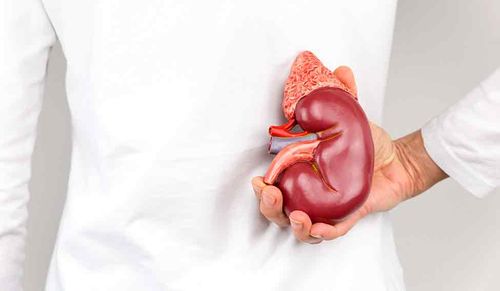
Dialysis on the go
A wearable artificial kidney may soon be a reality for dialysis patients. An exploratory trial that studied the safety and efficacy of such a device has shown that it could become a viable option and replace conventional dialysis machines.
People with advanced kidney disease generally require haemodialysis three times a week on a stationary machine at dialysis centres that restrict their mobility while getting the treatment.
A portable device, on the other hand, would allow patients to go on with their daily life. It could also provide additional treatment benefits from longer sessions or more frequent days of dialysis.
The new device was tried on seven patients for up to 24 hours. It seemed to work and successfully performed the functions of a normal kidney—it effectively cleared the blood of waste products, like urea, creatinine and phosphorus and also removed excess water and salt.
During standard dialysis, patients have to stick to a diet. But with the new device, the patients' blood electrolytes and blood fluid volume remained stable during the test, no matter what they ate.
The participants tolerated the treatment well and did not have any serious side effects. They also reported greater satisfaction compared to conventional dialysis centre treatment.
However, with the device, there was excessive formation of carbon dioxide gas bubbles in the dialysis solution, and intermittent variations in solution and blood flow. The researchers hope to address these problems through device redesign and refinement before further, long-term studies.
The findings were published in JCI Insight.
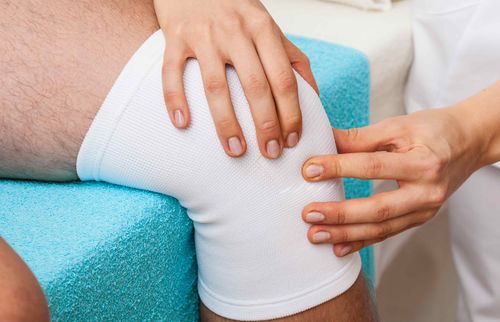
Current therapy
A zap of electricity can ease your arthritis symptoms! According to a study published in the Proceedings of the National Academy of Sciences, stimulating the vagus nerve can significantly reduce symptoms in patients suffering from rheumatoid arthritis. Rheumatoid arthritis is a chronic inflammatory disorder that affects millions of people worldwide.
A coin-sized stimulation device was implanted and connected to the vagus nerve in 17 rheumatoid arthritis patients. The device was activated and deactivated on a set schedule for 84 days. It generated tiny electric shocks up to four times daily.
Treatment response was assessed on the 42nd day. Several patients who had failed to respond to multiple therapies reported significant improvement. No serious adverse side effects were reported. The treatment targets the inflammatory reflex and reduces inflammation, providing “robust” relief.
“I believe this study will change the way we see modern medicine, helping us understand that our nerves can, with a little help, make the drugs that we need to help our body heal itself,” said the study co-author.
While the device was tested on rheumatoid arthritis patients, it may have implications for patients suffering from other inflammatory diseases like Crohn’s, Parkinson’s and Alzheimer’s.

Treat the young with care
Most antidepressants are ineffective for children and teens suffering from major depression and some may even be dangerous, according to a study published in The Lancet.
While cognitive behavioural therapy (CBT) and other psychological therapies are the first-line treatment recommended for children with depression, an increasing number of them are being prescribed antidepressants. The US Food and Drug Administration has issued a "black box" warning for all antidepressant use in young people under 24 years because they can increase suicidal thoughts and behaviour.
The researchers reviewed 34 studies that included 5,260 children and teens.
Of the 14 antidepressants studied, only fluoxetine was found to be effective in treating depression. Only with fluoxetine did the benefits outweigh the risks compared to a placebo.
Venlafaxine was linked to a higher risk of suicidal thoughts and attempts compared to a placebo and five other antidepressants. Venlafaxine, imipramine and duloxetine had the worst side effects, and more patients discontinued them compared to those using placebos.
“When considering the risk-benefit profile of antidepressants in the acute treatment of major depressive disorder, these drugs do not seem to offer a clear advantage for children and adolescents. Fluoxetine is probably the best option to consider when a pharmacological treatment is indicated,” the study concluded.
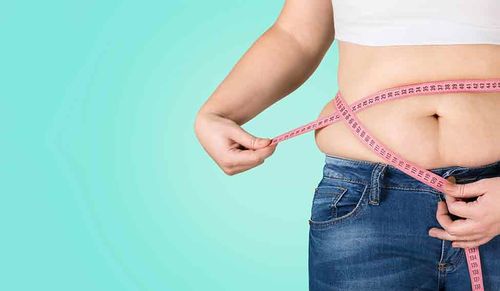
Drugs to slim down
Weight-loss drugs available in the market are effective in helping obese people shed pounds, but some may be more effective than others, according to a study published in the Journal of the American Medical Association that compared the five drugs that are approved in the US to tackle obesity.
For the study involving 29,018 patients, researchers analysed 28 clinical trials that tested the efficacy of the five approved drugs—orlistat, lorcaserin, naltrexone-bupropion, phentermine-topiramate, and liraglutide.
Compared to a placebo all the drugs helped obese people lose at least 5 per cent of their body weight at 52 weeks; 23 per cent of placebo participants had at least 5 per cent weight loss compared to 75 per cent of participants taking phentermine-topiramate, 63 per cent taking liraglutide, 55 per cent taking naltrexone-bupropion, 49 per cent taking lorcaserin, and 44 per cent taking orlistat. Weight loss at one year was 8.8kg with phentermine-topiramate; 5.3kg with liraglutide; 5kg with naltrexone-bupropion; 3.2kg with lorcaserin; and 2.6kg with orlistat.
Liraglutide and naltrexone-bupropion had the most discontinuation rate due to side effects compared with placebo.
"Ultimately, given the differences in safety, efficacy, and response to therapy, the ideal approach to weight loss should be highly individualised, identifying appropriate candidates for pharmacotherapy, behavioural interventions, and surgical interventions," the authors note.
Did You Know
Children who bite their nails or suck their thumbs are less likely to develop allergies as they grow up.
Pediatrics

Hold your breath
Breast cancer patients can be trained to hold their breaths for more than five minutes while undergoing radiotherapy, which can enable targeted treatment in just one dose in each daily session, thus minimising damage to healthy tissue, according to a British study published in the British Journal of Radiology.
A typical radiotherapy session takes two minutes to deliver. Since the tumour moves with breathing, healthy tissue around it is also damaged during treatment. If the patient can hold breath longer, there will be less tumour movement, thus reducing exposure to healthy tissue.
The researchers studied 15 breast cancer patients, aged 37 to 74 years, undergoing radiation treatment. All women were nonsmokers and did not have any respiratory, cardiovascular or neurological diseases, diabetes or obesity.
At the onset, the women could hold their breath for an average of 42 seconds. But with training they were able to hold their breath for an average of 5.3 minutes, the longest being 6.6 minutes.
“Being able to hit the cancerous tumour accurately is essential to avoid damage to other areas, including the heart muscle. Having a stable chest that we can target in one dose could be invaluable in protecting the surrounding tissue,” commented the study author.
According to the researchers, helping patients achieve a single breath-hold could greatly improve the long-term survival and quality of life of breast cancer patients.
Did You Know
Frequent moves during childhood can affect mental health and cause behavioural problems in adulthood. It is associated with increased risk of attempted suicide, violent criminal acts, mental illness, substance abuse and premature death, especially with multiple relocations during early and mid-adolescence.
American Journal of Preventive Medicine
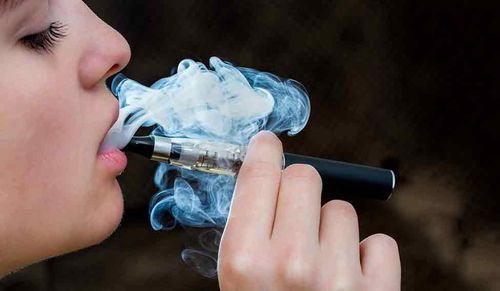
E-way to smoking
Vaping or using electronic cigarettes can be a gateway to smoking for teenagers.
According to a study published in the journal Pediatrics, teens who vape are six times more likely to take up traditional smoking over the next two years compared to those who have never tried it.
Researchers surveyed the use of e-cigarettes, cigarettes, cigars, pipes and hookahs among 300 students of 11th and 12th grades, average age 17; 146 of the teens had used e-cigarettes and 152 had never smoked or vaped.
But 16 months later, 40 per cent of e-cigarette users had begun smoking traditional cigarettes compared to just 11 per cent of those who had never used e-cigarettes. E-cigarette users were also more likely to use hookah, pipes or cigars.
"Adolescents who had never smoked, but who had used e-cigarettes, were substantially more likely to begin smoking combustible cigarettes over the next year. The increase in e-cigarette use, which may be followed by increases in cigarette use, could result in an erosion of the progress that has been made over the last several decades in tobacco control," the study author noted.
Artificial pancreas
Daily poking and injections to manage diabetes may soon be a thing of the past for people with type 1 diabetes. An artificial pancreas, a device that can continuously monitor blood glucose and then automatically adjust insulin delivery is likely to be available by 2018, according to a study published in the journal Diabetologia.
An individual’s insulin requirements can vary daily based on their diet, physical activity and other factors. One day they may require a third of their usual dose and the next day three times their normal dose. To avoid hyperglycaemia or hypoglycaemia, conditions that can lead to cardiovascular problems, patients have to constantly monitor their glucose levels.
Current management involves two components: checking glucose levels and then injecting the correct insulin dose. The artificial pancreas will combine both elements.
"In trials to date, users have been positive about how use of an artificial pancreas gives them 'time off' or a 'holiday' from their diabetes management, since the system is managing their blood sugar effectively without the need for constant monitoring by the user," the study authors said.
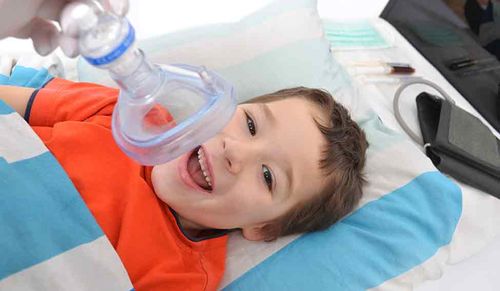
Safe for kids
A single exposure to general anaesthesia appears to be safe and does not affect brain development in healthy children under age 3, according to a US study published in The Journal of the American Medical Association.
According to the study author, animal studies have suggested that early exposure to commonly used anaesthetic agents could negatively affect learning, memory, attention and other cognitive functions. However, there isn’t enough research about anaesthesia’s impact on young children.
The study looked at 105 healthy children under age 3 who underwent surgical repair of inguinal hernia, a common early childhood procedure.
The researchers assessed IQ, memory, learning, processing speed, visuospatial function, attention, executive function, language, and behaviour when the children were between the ages of 8 and 15 and compared the outcome for each child with a sibling of a similar age who was not exposed to anaesthesia.
“There was no significant difference in IQ scores between the children who were exposed to anaesthesia and siblings who were not. Our findings should be reassuring to millions of parents whose young children need to undergo surgical procedures under general anaesthesia across the world each year,” said the study author.
However, “the effects of repeated and prolonged exposure to anaesthesia should be studied further, especially in kids with serious medical conditions”.

Spot early
US researchers have developed a blood test that can detect Alzheimer's disease at an early stage referred to as the mild cognitive impairment (MCI) stage with 100 per cent accuracy.
About 60 per cent of patients with MCI go on to develop Alzheimer’s disease. MCI is seen about 10 years before severe symptoms of the disorder appear. The remaining 40 per cent of cases can be caused by other factors such as vascular issues, drug side-effects and depression.
“To provide proper care, physicians need to know which cases of MCI are due to early Alzheimer’s and which are not,” said the lead researcher. For the proof of concept study, the researchers analysed blood samples of 236 people, including 50 with a diagnosis of MCI. They identified the top 50 autoantibody biomarkers in the blood that can detect early stage Alzheimer’s disease with an overall accuracy, sensitivity and specificity rate of 100 per cent.
“Our results show that it is possible to use a small number of blood-borne autoantibodies to accurately diagnose early-stage Alzheimer’s. These findings could eventually lead to the development of a simple, inexpensive and relatively noninvasive way to diagnose this devastating disease in its earliest stages.”
Early diagnosis of Alzheimer’s disease could potentially help patients delay disease progression through lifestyle changes, begin treatment sooner and plan future medical care.
The findings were published in Alzheimer’s & Dementia: Diagnosis Assessment & Disease Monitoring.
Contributor: SHYLA JOVITHA ABRAHAM






